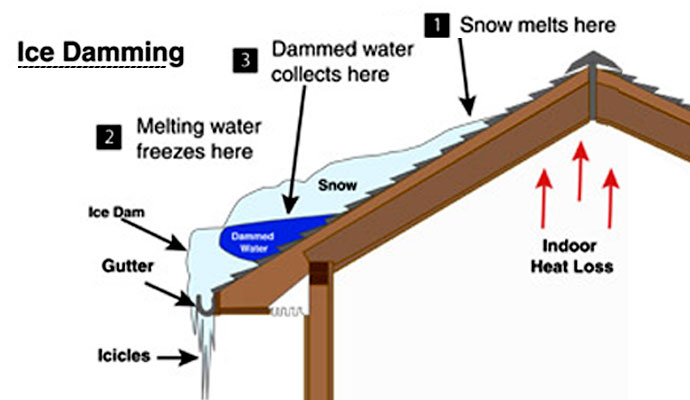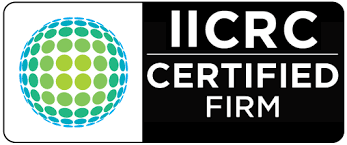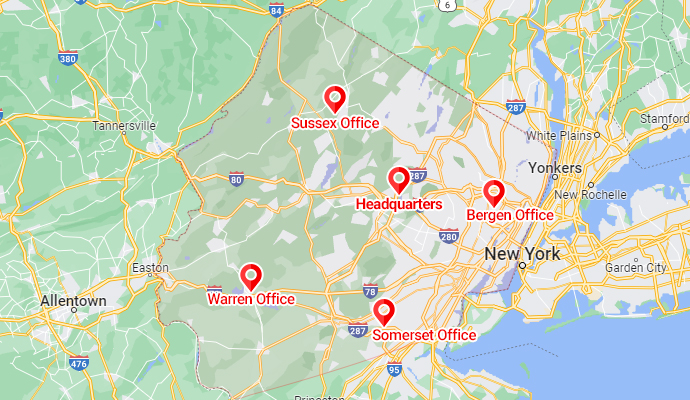Choose the Ice Dam Dry Out Experts at PDQ Restoration and Limit Long-Term Complications From Ice and Water Damage
What Is Ice Damming?
Ice damming occurs when snow on your roof melts due to heat escaping from your home. This warm air can rise into the attic through vent fans, pull-down stair access, or even recessed lighting, causing the snow on the roof to melt. The water flows to the roof's edges, where the overhangs are unheated, refreezing and forming a thick ice ridge, or "ice dam."
As the ice dam grows, additional melting snow or rainwater becomes trapped, backing up under shingles and into your home. This can lead to wet walls, damp ceilings, and significant water damage, including moisture buildup, mold, and structural deterioration.
What Are Some Ways To Prevent Ice Damming and Minimize Water Damage?

Preventing ice dams is crucial to protecting your home from humidity, water, and moisture-related problems. Here are some tips:
-
Install Ice and Water Shield:
Add a rubberized membrane beneath your roof shingles to redirect water away from the roof deck. While not foolproof, this layer helps mitigate potential damage. -
Keep Your Roof Cold:
Prevent snow melt by ensuring your attic is well-insulated. Proper insulation reduces warm air transfer from living spaces to the attic, minimizing the chances of ice dams forming. -
Add Attic Vents:
Proper ventilation reduces humidity and prevents condensation on your roof deck. This helps avoid mold, wood rot, and moisture damage in your attic. -
Inspect Ductwork:
Check for leaks and proper insulation in your attic ductwork. Poorly maintained ducts can release warm air into the attic, increasing the risk of ice damming. -
Remove Snow Safely:
After a snowfall, use a roof rake to remove snow from your roof's edges, preventing large buildups that could contribute to ice damming.
What About Ice Dam Removal?
Ice dam removal is a delicate process. While you can gently remove small buildups yourself, large or firmly attached ice dams should be handled by professionals. Attempting to chip away ice without proper tools can damage shingles, gutters, and roofing materials.
PDQ Restoration specializes in safe and effective ice dam removal, addressing not only the visible issue but also hidden damage. Our experts evaluate attic moisture, roofing conditions, and potential mold growth to prevent long-term complications.
What Other Problems Can Ice Damming Cause?
Ice dams can lead to rotting materials, staining, and mold, which can threaten your home and health. Excess water from ice dams can seep into your bathroom, toilet areas, sinks, and other spaces, creating an ideal environment for bacteria and mold to thrive. Proper cleaning and sanitizing are crucial to ensuring your home remains safe and healthy.
Why Choose PDQ Restoration?
PDQ Restoration provides licensed, professional ice dam cleanup and restoration services. From hazardous moisture removal to comprehensive inspections, we use advanced tools to ensure no hidden damage is left untreated. Our goal is to deliver clean, sanitized, and fully restored spaces to our clients.
If you’re dealing with ice damming or water damage, call PDQ Restoration today. With our expertise, you can protect your home and avoid costly repairs from lingering moisture or mold. Stay proactive and choose 24/7 emergency services for a safer, drier home this winter.
















